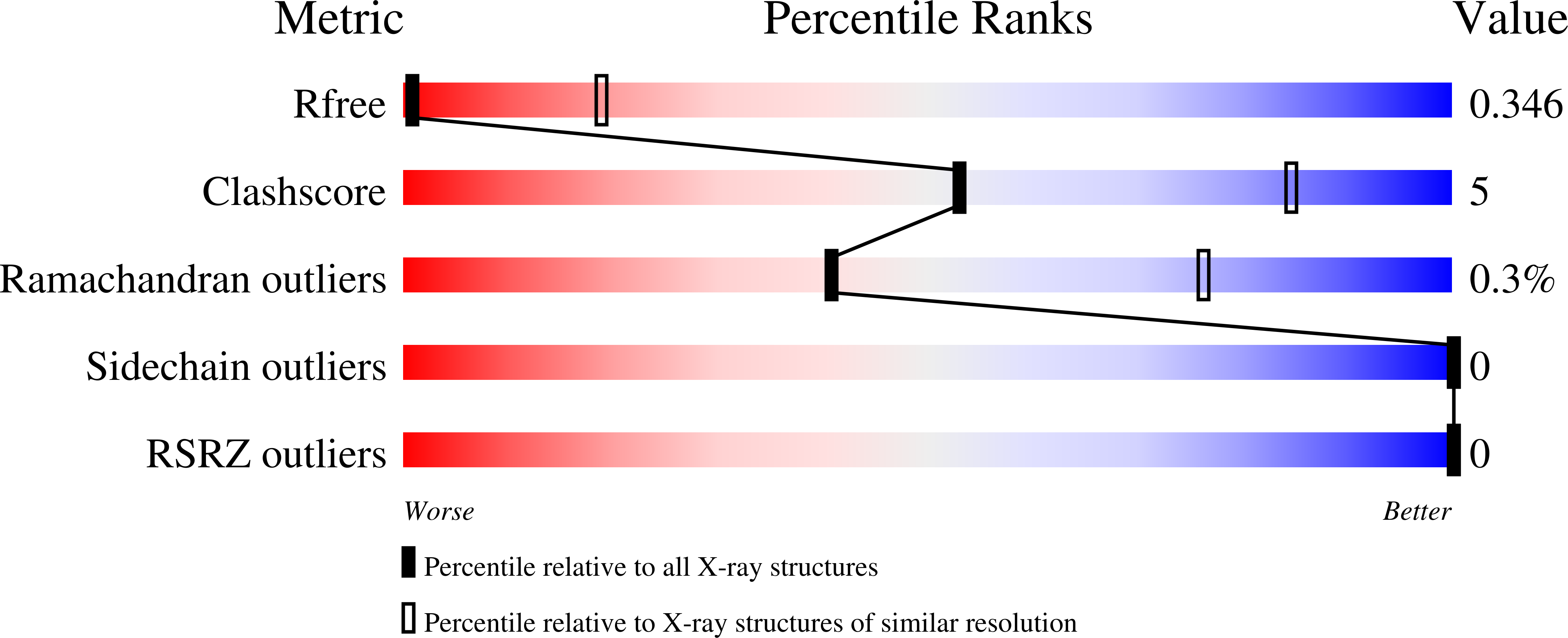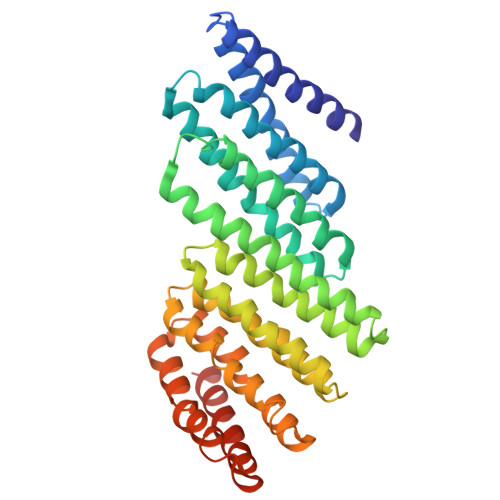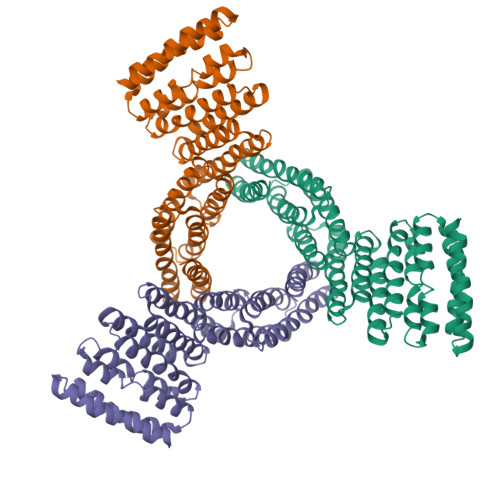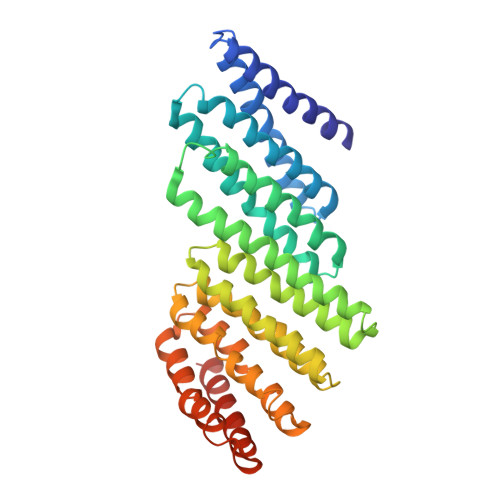Four-component protein nanocages designed by programmed symmetry breaking.
Lee, S., Kibler, R.D., Ahn, G., Hsia, Y., Borst, A.J., Philomin, A., Kennedy, M.A., Huang, B., Stoddard, B., Baker, D.(2024) Nature
- PubMed: 39695226
- DOI: https://doi.org/10.1038/s41586-024-07814-1
- Primary Citation of Related Structures:
8FLX - PubMed Abstract:
Four, eight or twenty C3 symmetric protein trimers can be arranged with tetrahedral, octahedral or icosahedral point group symmetry to generate closed cage-like structures 1,2 . Viruses access more complex higher triangulation number icosahedral architectures by breaking perfect point group symmetry 3-9 , but nature appears not to have explored similar symmetry breaking for tetrahedral or octahedral symmetries. Here we describe a general design strategy for building higher triangulation number architectures starting from regular polyhedra through pseudosymmetrization of trimeric building blocks. Electron microscopy confirms the structures of T = 4 cages with 48 (tetrahedral), 96 (octahedral) and 240 (icosahedral) subunits, each with 4 distinct chains and 6 different protein-protein interfaces, and diameters of 33 nm, 43 nm and 75 nm, respectively. Higher triangulation number viruses possess very sophisticated functionalities; our general route to higher triangulation number nanocages should similarly enable a next generation of multiple antigen-displaying vaccine candidates 10,11 and targeted delivery vehicles 12,13 .
Organizational Affiliation:
Department of Biochemistry, University of Washington, Seattle, WA, USA.
















